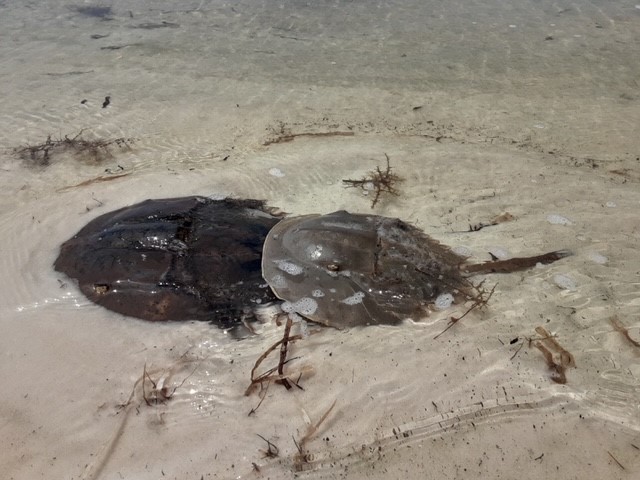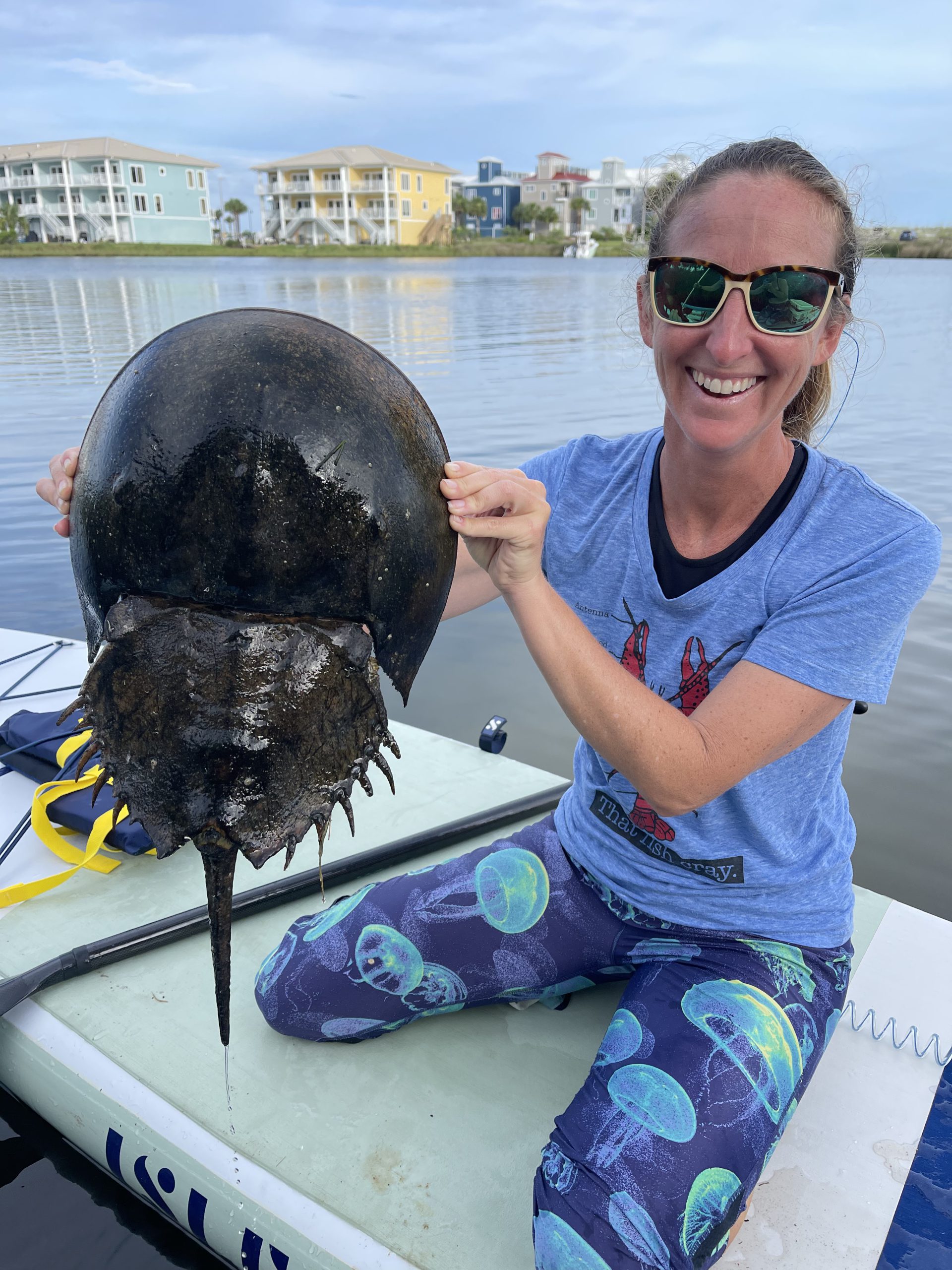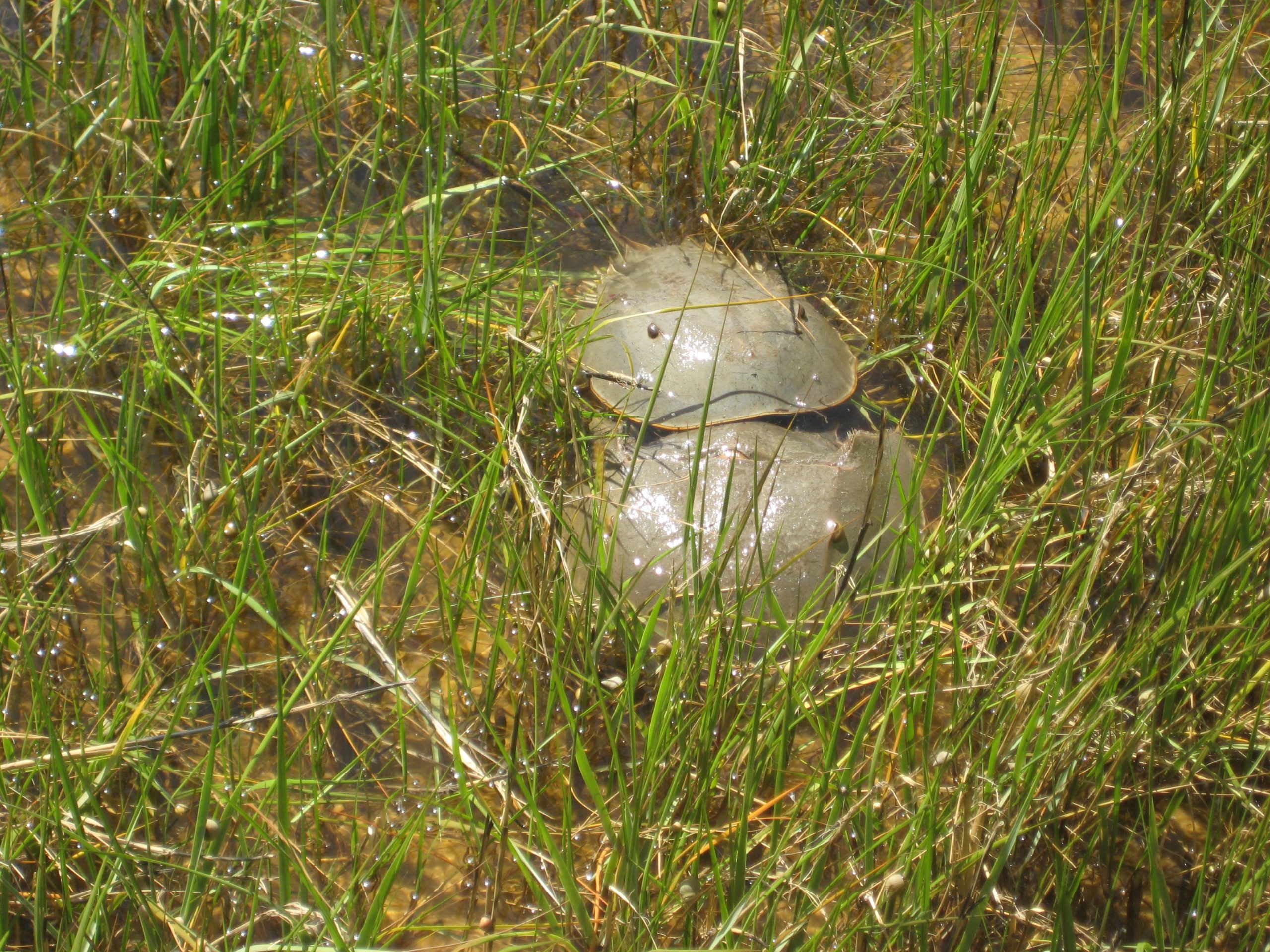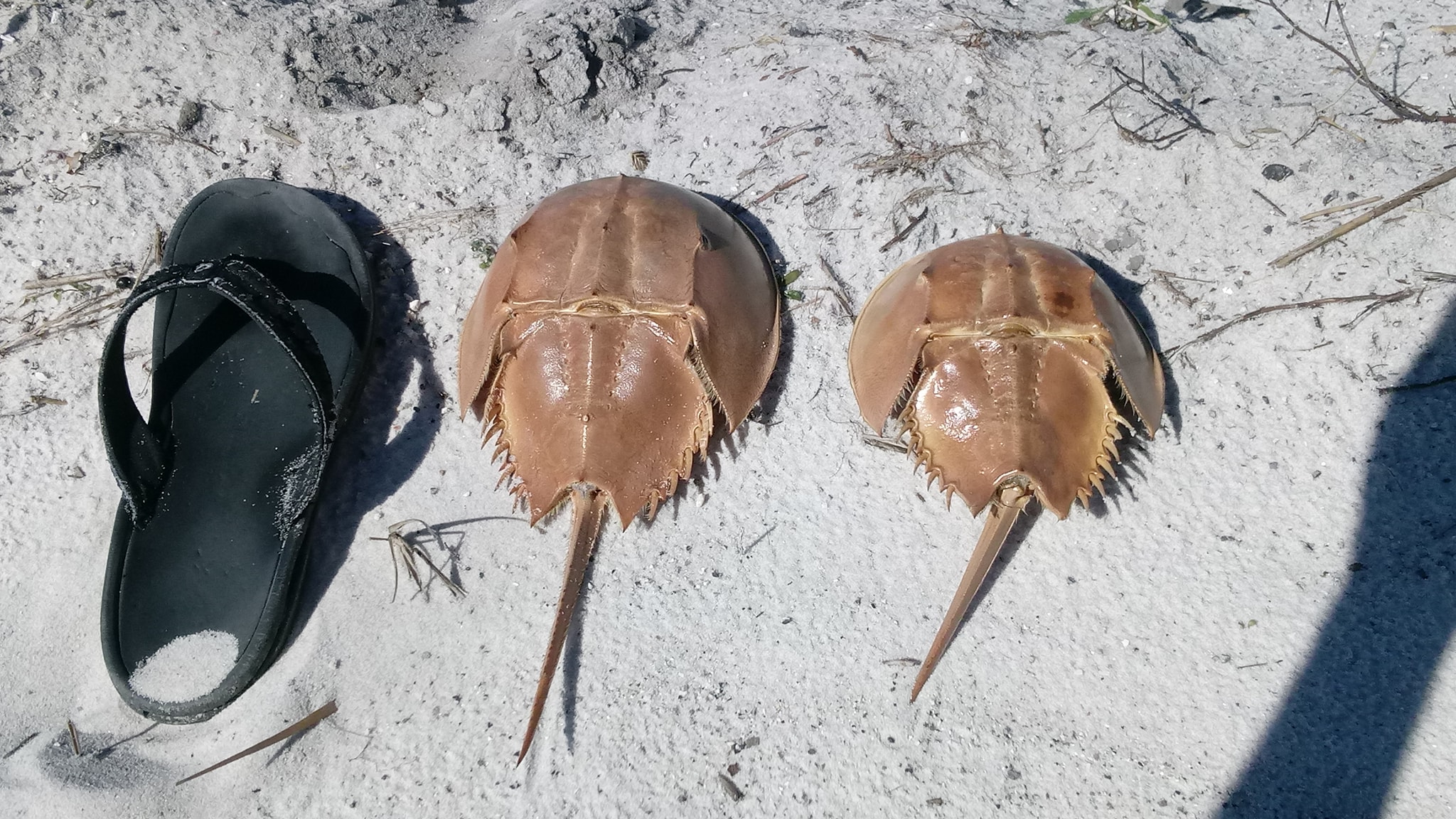This is an amazing animal – the horseshoe crab (Limulus polyphemus). A relic of an age before the dinosaurs, they have been plowing the sediments of our marine and estuarine waters for over 400 million years.
They are thick armored tanks, shaped like horseshoes with a long spikey tail giving them appearance of a stingray. They are usually a deep green color, though some have a brownish hue, and have two lighter colored eyes on each side of the head, though there is a third you cannot see. They crawl across the bottom of the Gulf and bays seeking smaller invertebrates to eat. Their armor protects them from most predators, but they do have a few, like the loggerhead sea turtle. Though harmless to people, they don’t appear that way with numerous spines running along their abdomen and the long spine extending from the rear on a ball and socket joint that allows them to swing it, albeit slowly, in circles. They are pretty cool actually.

Photo: Bob Pitts
They are actually not crabs. They are in the Phylum Arthropoda, like crabs, but not in the Subphylum Crustacea, as crabs are. Rather they are in the Subphylum Chelicerata and more closely related to the arachnids like spiders and scorpions. There are four species of these creatures remaining on the planet, three of those live in Asia, one along the Atlantic and Gulf coast of the United States.
Horseshoe crabs vary in size throughout their range but are typically between one to two feet in length and up to one foot across the head. This would be the size of a large female; males are much smaller.
They are benthic creatures exploring the bottom of both the bays and the open oceans searching for food.

Photo: Amanda Mattair
Life for a horseshoe crab begins on the shore. Mom buries her eggs in the sand at the tideline during the spring high tide of either the spring or fall season. They young emerge between two and four weeks and begin life as plankton (though they resemble the adults at this stage). They eventually settle out as juveniles in the seagrasses near where they were born and begin their life as benthic creatures. The large adults eventually work their way out into the open ocean to feed before returning to start the cycle over.
When the females return, smaller males pursue her to shore in hopes of being the one to fertilize her eggs. Many times, a male will use a modified claw that resembles a hook to grab on to the back of the female and ride in with her. But several other males, called satellites, will continue across the bottom in pursuit. Once on the beach she will begin to deposit her eggs in the sand at high tide and the males rush in to fertilize. Studies show that more often than not it is one of the satellites who is successful. And so, it goes over their 20 year life span, and this has been going on for hundreds of millions of years.

Photo: Charles Pulley
Their range extends from the Gulf of Maine to the Gulf of Mexico. Populations within this range have declined in recent years and there have been efforts throughout to manage this problem. Here in Florida the Florida Fish and Wildlife Conservation Commission (FWC) has developed a citizen science project they call The Florida Horseshoe Crab Watch where volunteers visit nesting beaches to collect information from the animals and tag them. Here in Pensacola Bay, though we have seen horseshoe crabs, we have not identified any nesting beaches and that is the focus of our Pensacola Bay Horseshoe Crab Hunt… to find those nesting beaches.
In 2017 we began marking horseshoe crab sightings in the Pensacola Bay area on a map. The purpose of this was to determine if there were “hotspots” (locations that had repeated sightings) that we could use to search for nesting locations. Beginning in 2020 we trained citizen science volunteers to survey one of nine such hotspot locations. Each of these were laid out with beach walking transects that ranged from 0.30 to 0.95 miles in length (mean = 0.69 miles).

Photo: Holly Forrester
In 2022 we trained 14 volunteers in March to survey these transects. They were instructed to visit one of the nine locations ± 30 minutes of spring high tide during the spring months (April-June). All of the spring tides were provided to them, but they had to use an outside resource to determine what time high tide as their location. Each volunteer was provided an FWC data sheet to complete after each survey and submit these to the local Sea Grant Extension Agent.
12 of the 14 volunteers (86%) did conduct at least one survey. These surveys covered six of the nine transect locations (67%) and others surveyed nine new locations.
A total of 77 surveys were conducted during the spring of 2022 for a total of 23.7 miles and logging 77 hours. No horseshoe crabs were sighted, and no nesting beaches were found.
That said, the general public continued to call in sighting reports outside of the official surveys. Six residents sent the Sea Grant Extension Agent records of sightings at six locations around the bay area. Three of these were locations were transect locations we are currently surveying, further confirming these are good places to search. Those three were Big Sabine, Little Sabine, and Sharp Point on Pensacola Beach. The other three locations included Portofino and the point at Ft. Pickens on Pensacola Beach as well as Navarre Beach.
Locations that were surveyed and no sightings were reported included Park West and Morgan Park on Pensacola Beach, Naval Live Oaks in Gulf Breeze, Sanders Beach and Bayou Grande in Pensacola, and Galvez Landing, Perdido Key State Park, Big Lagoon State Park and Tarkiln Bayou out near Perdido Key.
We will continue to search these sites each year in hopes of finding nesting horseshoe crabs. We encourage everyone to continue to report sightings to the Sea Grant Extension Agent in Escambia County (850-475-5230; roc1@ufl.edu ) and consider becoming a volunteer in the spring.
 0
0
